First in a Series about Animals, Agriculture and the Environment.
What is a CAFO?
First, let’s parse. A CAFO is a Concentrated Animal Feeding Operation. Some call it a Confined Animal Feeding Operation. You are already getting the idea. “Feeding operation” does not paint a pretty picture when defining an animal’s life. A feeding operation for animals concentrated in confined areas is as bad as it sounds.
CAFOs are popularly called “factory farms.” It is appropriate. They are where the raw materials of feed and live animals are combined to manufacture on a massive scale meat and other animal products for human consumption. Generally speaking, though, CAFO’s give a bad name to both factories and farms. The former are required by law to be humane and safe. The latter actually use the land to grow things. CAFOs are something else entirely.
In his book, Animal Factory: The Looming Threat of Industrial Pig, Dairy, and Poultry Farms to Humans and the Environment, author David Kirby describes CAFOs as:
[L]arge-scale, mechanized megafarms where hundreds of thousands of cows, pigs, chickens, and turkeys are fed and fattened for market, all within the confines of enclosed buildings or crowded outdoor lots.
Below are photographs of CAFOs. David’s explanation continues after the gallery.
Click an image to start the gallery. Picture credits are at the end of post.
CAFOs are where most of our animal protein—our milk, cheese, butter, yogurt, eggs, chicken, turkey, bacon, sausage, cold cuts, ribs, pork chops, and, increasingly, beef and fish—comes from these days. Old MacDonald’s farm—with his big red barn and clucking chicks in the yard—is quickly fading away into a romanticized past. Today, MacDonald would most likely be working as a contract grower for some conglomerate, raising tens of thousands of animals inside giant enclosures according to strict instructions dictated by the company, which typically owns the livestock but is not responsible for the thousands of tons of waste left behind before the survivors are trucked off to slaughter.
. . . Science and government have concluded without a doubt that CAFOs are responsible for discharging millions of tons of contaminants from animal manure into the environment every year—much of it illegally. Unlike the steel, auto, or coal industries, livestock operations are not subject to the same stringent rules, regulations, laws, and controls on environmental discharges.
The regulation and management of CAFO’s are rife with conflict, as we will discuss in future posts. Differing official descriptions of animal feeding operations offer some insight.
This is an explanation by the United States Environmental Protection Agency:
Animal Feeding Operations (AFOs) are agricultural operations where animals are kept and raised in confined situations. AFOs congregate animals, feed, manure and urine, dead animals, and production operations on a small land area. Feed is brought to the animals rather than the animals grazing or otherwise seeking feed in pastures, fields, or on rangeland.
The description by the U.S. Department of Agriculture is kinder and gentler:
The confinement of beef and dairy cattle, swine and poultry have greatly increased production efficiency and reduced the pressure on our nation’s lands, but the concentration of domestic animals that comes with confinement brings its own resource challenges.
The Pew Commission on Industrial Farm Animal Production, a project of the private, independent Pew Charitable Trusts, offered this sobering description:
While increasing the speed of production, the intensive confinement production system creates a number of problems. These include contributing to the increase in the pool of antibiotic-resistant bacteria because of the overuse of antibiotics; air quality problems; the contamination of rivers, streams, and coastal waters with concentrated animal waste; animal welfare problems, mainly as a result of the extremely close quarters in which the animals are housed; and significant shifts in the social structure and economy of many farming regions throughout the country.
In his book’s introduction, Kirby writes:
Many Americans have no idea where their food comes from, and many have no desire to find out.
That is unfortunate.
Every bite we take has had some impact on the natural environment, somewhere in the world. As the planet grows more crowded, and more farmers turn to industrialized methods to feed millions of new mouths, that impact will only worsen.
Meeting the needs of an ever hungrier planet poses ethical, environmental, economic and political challenges that have daunted policy makers, international agencies and major charitable institutions. In our continuing series, EarthDesk will examine those issues and invite some of our best thinkers and doers, including David Kirby, to weigh-in.
Stay tuned.
8. Larry Rana (USDA) [Public domain], via Wikimedia Commons

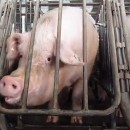
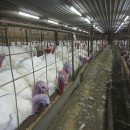
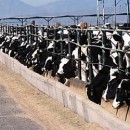


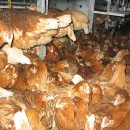
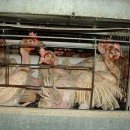
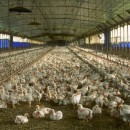









Consider buying yogurt produced by small and sustainable farm operations:
http://knowwhereyourfoodcomesfrom.com/farm-to-table-dining/local-foods/yogurt/
THANKS for your focus on CAFOS!
Best wishes- Frank